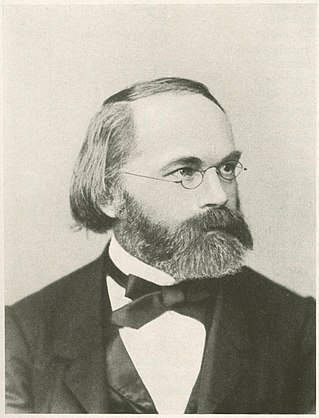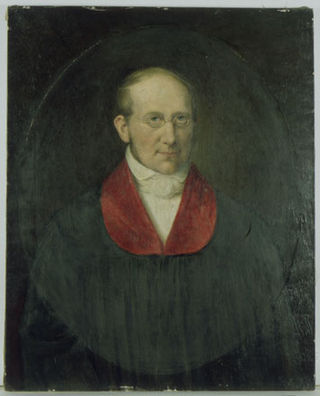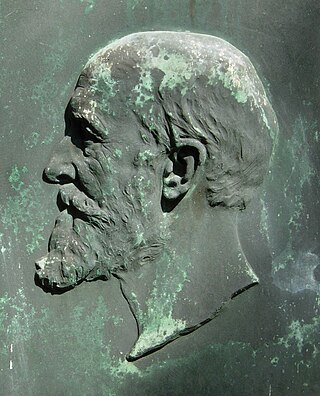
Carl Wilhelm von Nägeli was a Swiss botanist. He studied cell division and pollination but became known as the man who discouraged Gregor Mendel from further work on genetics. He rejected natural selection as a mechanism of evolution, favouring orthogenesis driven by a supposed "inner perfecting principle".
Otto Renner was a German plant geneticist. Following the work of Erwin Baur, Renner established the theory of maternal plastid inheritance as a widely accepted genetic theory.

Georg Albrecht Klebs was a German botanist from Neidenburg (Nidzica), Prussia. His brother was the historian Elimar Klebs.

Hermann Friedrich Stannius was a German anatomist, physiologist and entomologist. He specialised in the insect order Diptera especially the family Dolichopodidae.
Hartmut Erbse was a German classical philologist.

Wilhelm Friedrich Benedikt Hofmeister was a German biologist and botanist. He "stands as one of the true giants in the history of biology and belongs in the same pantheon as Darwin and Mendel." Largely self-taught he was the first to study and establish alternation of generations and the details of sexual reproduction in the bryophytes.

Alexander Carl Heinrich Braun was a German botanist from Regensburg, Bavaria. His research centered on the morphology of plants.

Karl Georg Friedrich Rudolf Leuckart was a German zoologist born in Helmstedt. He was a nephew to naturalist Friedrich Sigismund Leuckart (1794–1843).
Karl Johannes Kniep was a German botanist who was a native of Jena.

Heinrich Nissen was a German professor of ancient history.
Friedrich (Fritz) Wilhelm Ludwig Kränzlin was a botanist associated with the Natural History Museum (BM).
Harmon Northrop Morse was an American chemist. Today he is known as the first to have synthesized paracetamol, but this substance only became widely used as a drug decades after Morse's death. In the first half of the 20th century he was best known for his study of osmotic pressure, for which he was awarded the Avogadro Medal in 1916. The Morse equation for estimating osmotic pressure is named after him.

Dr. Julius Ritter von Wiesner was a professor of botany at the University of Vienna, a specialist in the physiology and anatomy of plants.

Eduard Fischer was a Swiss botanist and mycologist.

FriedrichWilhelm Zopf was a well-known German botanist and mycologist. He dedicated to his whole life with fungal biology, particularly in classification of fungi and dye production in fungi and lichens. Besides, his textbook on fungi called “Die pilze in morphologischer, physiologischer, biologischer und systematischer beziehung ” in 1890 was also an outstanding work on the subject for many decades. The unicellular achlorophic microalgae Prototheca zopfii is named after him because of his profound suggestions and contributions to Krüger's pioneering work in Prototheca. Thus, his numerous contributions gave him a special status in mycological history.

Hermann Vöchting was a German botanist.
Bernhard Schweitzer was a German classical archeologist.
Johannes (Hans) Theodor Gustav Ernst Fitting was a German plant physiologist. He was the son of law professor Heinrich Hermann Fitting.
Friedrich Wilhelm Hagen was a German psychiatrist. His father, also named Friedrich Wilhelm Hagen (1767–1837), was a noted clergyman.
Hermann Gerhard Weyland was a German chemist and botanist. In collaboration with Richard Kräusel, he carried out significant paleobotanical investigations of Devonian flora.













